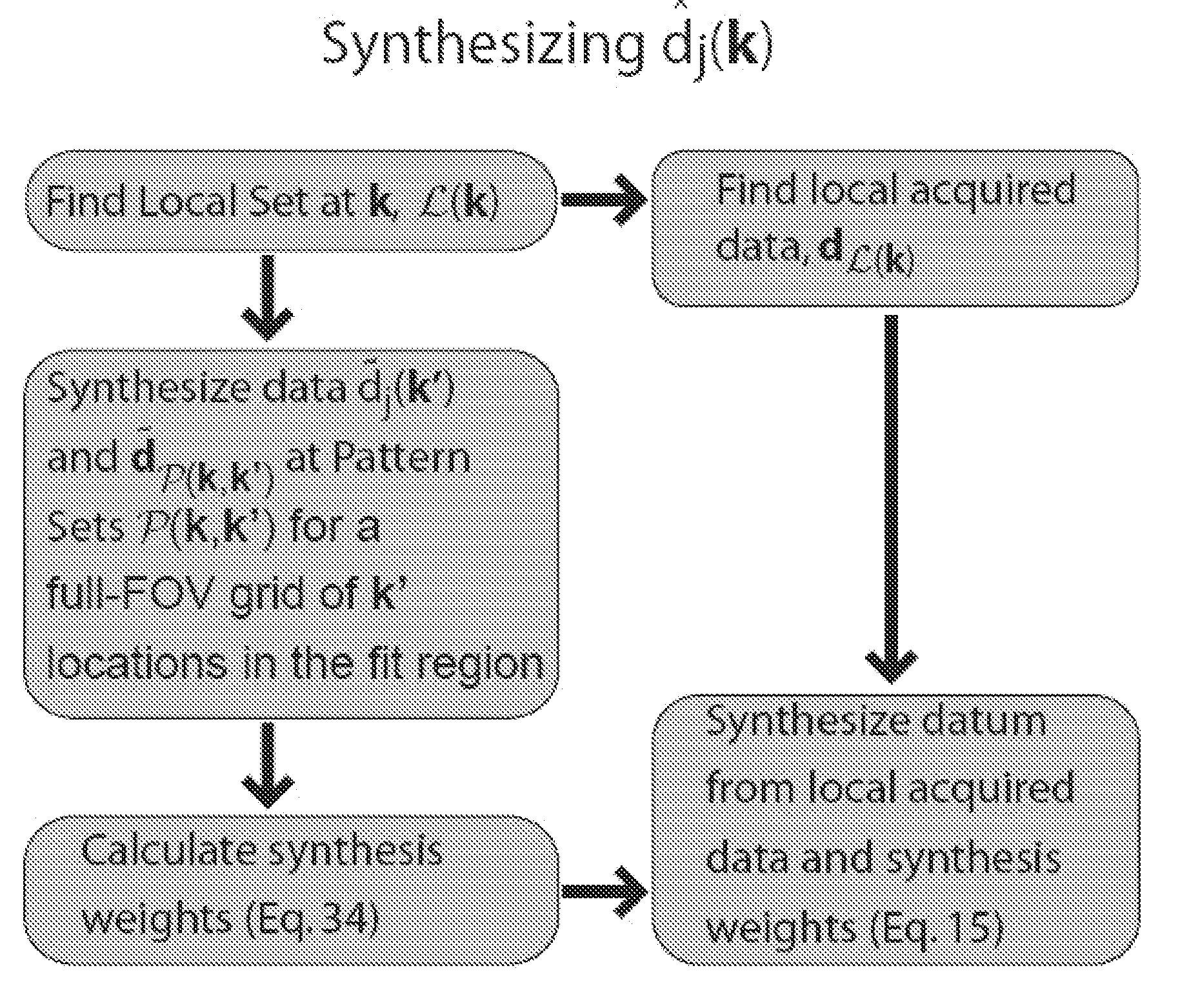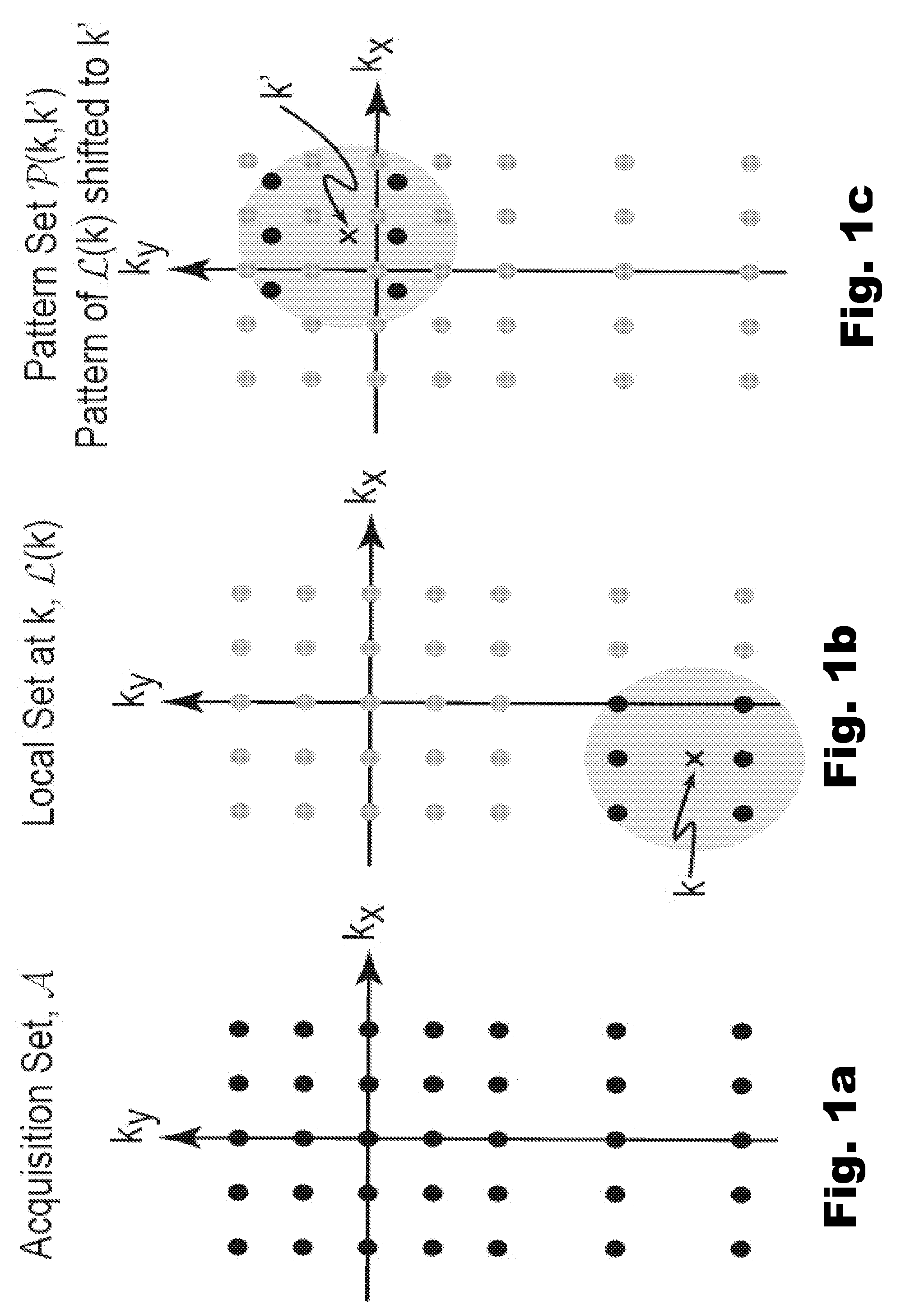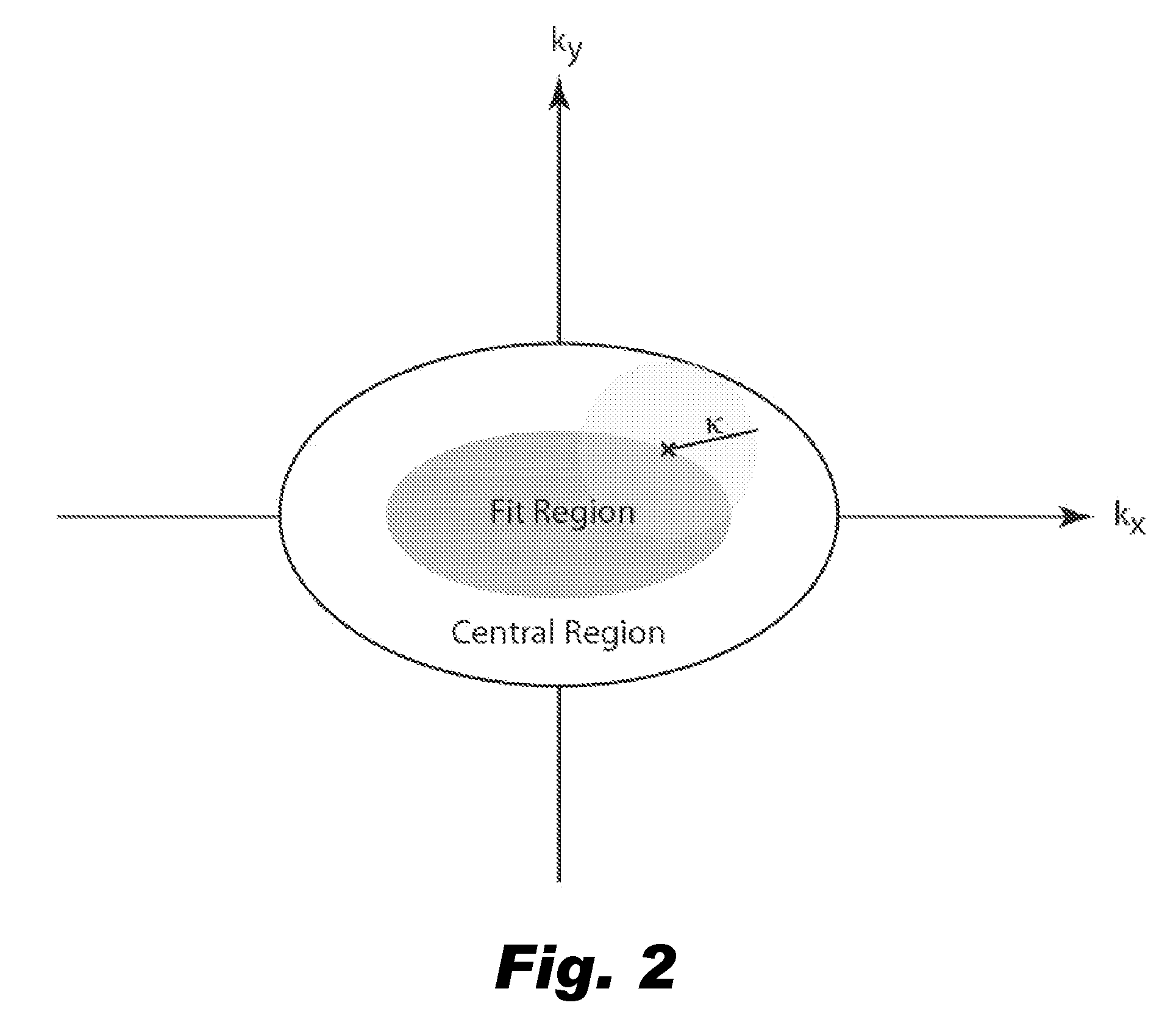Anti-aliased magnetic resonance image reconstruction using partially parallel encoded data
a magnetic resonance image and data technology, applied in the field of mri, can solve the problems of difficult to obtain difficult to achieve the coil sensitivity function in practice, visible image artifacts, etc., and achieve the effect of removing aliasing artifacts
- Summary
- Abstract
- Description
- Claims
- Application Information
AI Technical Summary
Benefits of technology
Problems solved by technology
Method used
Image
Examples
Embodiment Construction
[0027]Consider first the theory underlying sensitivity encoding, or SENSE, which can be extended to provide an understanding of local projection calibration as used in the present invention.
[0028]In MRI, data acquisition can be viewed as analyzing the spatially varying transverse magnetization, m(r), by projecting it onto a collection of encoding functions which take the form ej(k, r)=sj(r)g(k, r) where sj(r) is the sensitivity of receiver coil j and g(k, r)=exp(−i2πkTr) is the gradient encoding function for location k. When only one receiver coil is used, each encoding function can be uniquely identified by a specific location in k-space. When using multiple coils, the notion of location can be extended by defining an encoding location to be the pair of values, (j, k), consisting of an integer coil index and continuous-valued three-tuple k-space location k, that uniquely identifies an encoding function. The projection of m(r) onto an encoding function is accomplished by the integra...
PUM
 Login to View More
Login to View More Abstract
Description
Claims
Application Information
 Login to View More
Login to View More - R&D
- Intellectual Property
- Life Sciences
- Materials
- Tech Scout
- Unparalleled Data Quality
- Higher Quality Content
- 60% Fewer Hallucinations
Browse by: Latest US Patents, China's latest patents, Technical Efficacy Thesaurus, Application Domain, Technology Topic, Popular Technical Reports.
© 2025 PatSnap. All rights reserved.Legal|Privacy policy|Modern Slavery Act Transparency Statement|Sitemap|About US| Contact US: help@patsnap.com



